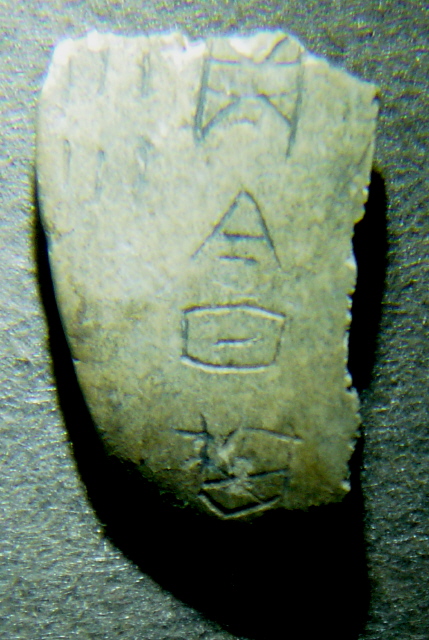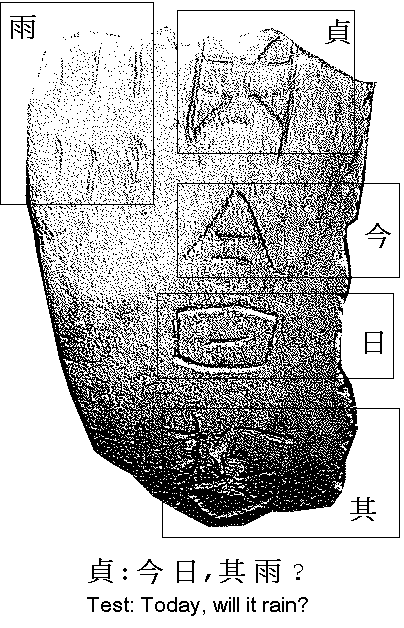Cangjie and the Creation of Chinese Characters
Our story begins in the reign of the Yellow Emperor, Huang Di, in China around 1600 BCE when the main method of record keeping involved a tedious process of tying knotted ropes of various colours and sizes. Recognizing that the current system was not adequate, he tasked his court historian, Cangjie, to create a better method.
Cangjie, who would later be exalted and then deified as wisdom incarnate and the god of writing, has often been said to have been born with four eyes (that’s four literal eyes) that gave him the ability to see through and find the truth behind any mystery. There are many different tales of how Cangjie came to create the Chinese characters, or zi as they were called.
One version of the tale has Cangjie spotting a phoenix overhead with something in its beak. The phoenix then dropped the object to the ground where Cangjie would pick it up and discover it as the footprint of an animal so unique that he could not recognize it. He asked a hunter who was passing by for help identifying the footprint to find out it was from a Pixiu, a mythical beast that resembles a winged lion. Inspired by how the footprint could encompass the essence of the Pixiu, he set out to capture the characteristics within drawings, or logographs, which would later become Chinese characters.
In another version Cangjie was born with the knowledge of writing, one where he secludes himself in a cave, and another where he finds his inspiration by observing a turtle shell. The creation of the Chinese characters is said to be so impactful that grains fell from the heavens and ghosts wailed throughout the night.
- According to the scholar Gao You, the invention of writing also became the invention of deceit. Farmers would forget their duties and turn their attention to petty affairs causing the heavens to rain down seed for their fields, knowing that they would grow hungry otherwise. Ghosts were afraid of being prosecuted in writing so they wept.
When Cangjie presented the emperor a complete set of characters, the emperor was so pleased that he presented Cangjie with a surname that translates to “the person above the monarch” and Cangie began teaching these characters throughout the empire. However, the number of characters was so great that most people could not remember them all. Even Confucius is said to only have learned 70% of the total number of characters. Cangjie, disappointed by this fact, threw away the remaining 30% to foreign countries. This is said to be the origin of foreign script.
The earliest evidence of Chinese character usage can be found one carvings on shells known as Oracle Bone Script and today Cangjie has been immortalized once more as the Cangjie Input System, as a method for inputting Chinese characters into a computer.
Sources
- Handbook of Chinese Myth by By Lihui Yang, Deming An, Jessica Anderson Turner
- Meggs’ History of Graphic Design 5e by Philip B. Meggs, Alston W. Purvis


